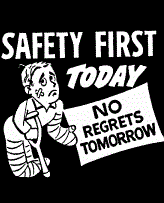The following statement about Friday's mishap at Algoma Steel's #7 blast furnace was released to SooToday.com this afternoon by an Ontario Ministry of Labour spokesperson.
Sources close to the investigation advise SooToday.com that the force of Friday's explosion was so great that at least one worker claimed to have narrowly escaped being blown off the structure.
The #7 furnace is one of North America's biggest working blast furnaces and is essentially the heart of local steelmaking.
It provides as much as five tons of liquid iron a minute, 100 percent of the liquid iron used by Algoma Steel's basic oxygen steelmaking process.
Essar Algoma Steel has so far not responded to a number of SooToday.com requests for information about this blast.
************************* The Ministry of Labour is investigating an incident that occurred about 8:15 a.m. on July 27 at Algoma Steel at 105 West Street in Sault Ste. Marie.
Workers were using an explosive material to break up solidified iron inside the hearth of a blast furnace when an explosion occurred.
Immediately after the blast, about eight workers complained of ringing in the ears and some also complained of headaches.
Six of the affected workers went to the Sault Area Hospital where they were checked and released.
The work was being performed by Anmar Mechanical & Electrical Contractors, of Lively, ON., which had been contracted by Algoma to break up the solidified iron.
The Ministry of Labour is investigating.
On July 27, the ministry issued two orders under the Occupational Health and Safety Act to Anmar Mechanical & Electrical Contractors.
The company was ordered to:
1. Ensure, before blasting begins, that the worker in charge of blasting operations posts workers at the approaches to the affected area in order to prevent access to it; and
2. Ensure, before blasting begins, the worker in charge of blasting operations ensures (i) that only workers required to carry out blasting are located in the blasting area, (ii) no workers remain in an area whose means of egress passes the affected area; and (iii) a warning that is clearly audible within a radius of one kilometre of the blast is given by siren.
Both orders have been complied with. The ministry is continuing to investigate.
No other information is available at this time.
*************************
